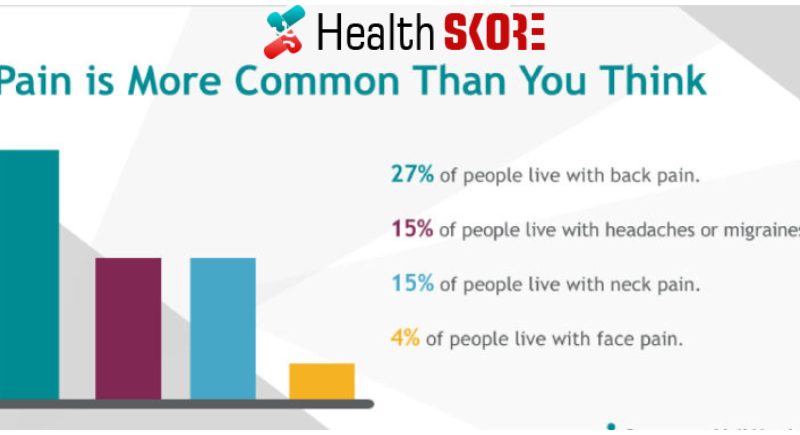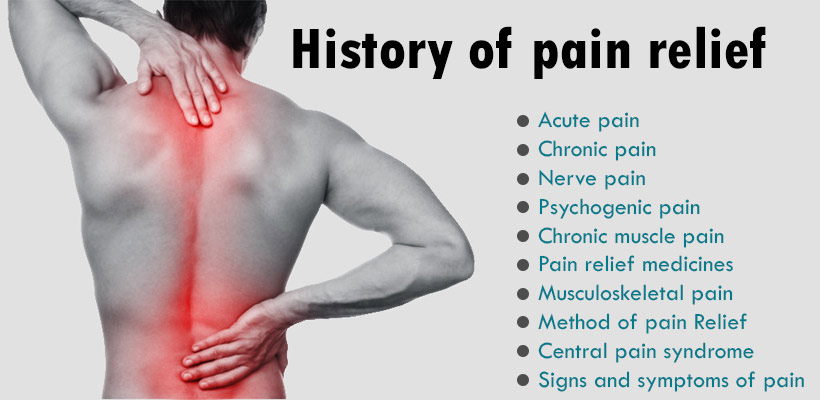Grinding Teeth – Jaw Pain
If you wake up with a jaw ache, you might be grinding your teeth at night. Grinding teeth can cause painful aching in your jaw if you do it in your sleep. People with problems also tend to have other symptoms, including headaches, earaches, insomnia, depression, and anxiety.
While teeth grinding is one of the possible causes of jaw pain, it is not the only reason. If you are experiencing jaw pain, make sure to consult with a doctor to assess other potential culprits behind your problem, including ear problems, infections, TMJ problems, and dental issues.
People grinding their teeth can take a few steps to get rid of the problem. These solutions might include ample sleeping, reducing stress, drinking plenty of water, and avoiding hard, chewy foods like steaks, hard candies, and nuts.
Stress – Whole Body Pain
Everyone experiences stress at some point. It is the feeling the body gets when it goes into fight or flight mode. There can be many potential triggers for stress, including an argument with a loved one, not finding the thing you are looking for, etc. Anything that your mind perceives as a threat can trigger stress.
Several changes can occur in your body when it reacts to a threat, including your heart beating faster, muscles getting tense. Often the stress symptoms might last for more than a few hours, leading to chronic stress. People with this condition can experience muscle aches all over the body due to tense muscles caused by stress hormones.
Try finding ways to reduce stress when you recognize that you are in a stressful situation. Meditation, yoga, exercise, massage, and other therapies are some of the things that might help you relax. The right de-stressor can help ease your overall body pains.
Sexual Activity – Headaches
People might experience two types of headaches during sexual intercourse. The first is a dull and gradual ache that starts as mild but worsens as a person approach climax. The other is a pounding and intense headache that surfaces at or near orgasm.
These headaches are not usually a reason for concern. However, they may be an indication of other health issues. Typically, these headaches come in clusters for a few months and then go away for a while.
While some might develop headaches during sex, others find that sex relieves their headaches. Though it is highly dependent on the type of pain you are experiencing. Almost 60% of people who had sex during a migraine attack reported relief from their pain. People with cluster headaches also find sexual activities to help relieve their pain. However, the percentage is smaller, only a little over 35%.
Carrying Kids – Neck And Shoulder Pain
Many new mothers and fathers experience a lot of physical pain in the first few years of childbirth. The tiny baby you carry around grows by the month. With the baby’s growth, the burden on your neck and shoulder exerted from their increased weight also increases.
When lifting your child, use your legs and not your back. Don’t favor one arm over the other. Using only one of your arms can put a strain on your dominant shoulder. When carrying the baby, try keeping your shoulders back and stand tall – it will help distribute the excess weight evenly across your body and prevent pain and injuries.
Nursing mothers should especially be careful not to gaze at their kids for prolonged periods while breastfeeding or bottle-feeding. Though you can look at your child, you should stretch out your shoulders as you do so to avoid the usual neck pains associated with new moms.
Working Out Infrequently – Muscle Pain
Soreness comes the next day after you lift weights. People think that lifting weight make their muscle stronger. However, in reality, your muscles do break when you start exercising. It is only afterward that your body becomes accustomed to the routine.
Muscle breakdown triggers an inflammatory response, making the pain receptors more sensitive. The condition is known as delayed-onset muscle soreness or DOMS. The pain arising from exercise can be excruciating when you start a specifically intense routine. However, the pain receptors become less sensitive to this kind of problem after weight lifting as your body becomes accustomed to your workout routine.
If you work out infrequently, having substantial gaps between sessions, you set yourself up for problems. With infrequent exercise, your pain receptors don’t get ample time to grow accustomed to the inflammation. You can consider working out more to prevent this problem from occurring.
Weather Changes – Joint Pain
People often complain about joint pain with changing weather. While it may sound like one, it is not a myth. Weather changes can cause people to experience joint pain. Predominantly, three types of changes in weather – pressure, humidity, and temperature drop can trigger joint aches.
The changes in barometric pressure can not only indicate the movement of a storm, but it can also predict your joint pain. The initial pressure at a given moment is not relevant because it’s not the current pressure, but the barometric pressure changes cause the problem. Joint pain occurs because your muscles, bones, and tendons all expand and contract as the pressure shifts.
Experts still do not fully understand the relationship between temperature drop and joint pain. However, they believe that it has to do with the changes in your joint fluids’ thickness. Cold weather can make the joint’s fluid thick, creating a hindrance in lubricating the joints, leading to stiffness. People with joint problems might find their joint pain, exaggerated when there is a combination of low temperature and high humidity.
Eyestrain – Headache
A problem with your eyes can cause eye strain that can result in a headache. However, the problem can also work in reverse. Meaning headaches can also sometimes cause pain in the eyes.
People with vision problems may find it straining to see clearly and with focus. Often, it is a matter of being farsighted, nearsighted, or suffering from astigmatism. This problem can also arise from the misalignment of the eyes. The strain occurs when you spend considerable time starting at a single point, such as your phone, computer screen, or a book. If eye strain is the reason behind your headaches, make sure you are wearing proper prescription glasses.
If you are using the right glasses and the pain continues, talk to an eye specialist about further remedies.
Office Work – Back And Neck Pain
Millions of people feel stiffness and pain in their back and neck after work. You can get rid of this unbearable pain by following a simple rule – say no to slouching. Many people don’t maintain a good posture throughout the workday and suffer from back pain.
To ensure that the spine is aligned correctly:
- Pay attention to the posture.
- Place the feet flat on the floor and sit so that your weight gets distributed evenly across your hips, and not focus on the tailbone.
- Ensure that the computer monitor is at your eye level to not strain yourself by looking up or down.
The human resource department can help you with tips tailored to your work situation. You can also find ergonomic tips designed for your particular work situation and follow them.
Lifting Improperly – Back Pain
Virtually everyone experiences some back pain. Improper lifting techniques are among the most prevalent causes of back pain. Fortunately, you can avoid experiencing this back pain by learning the right movements and positions you have to maintain while lifting something heavy.
When lifting something, pay attention to your posture. Try to keep it as neutral as possible. Also, try to avoid:
- Twisting, bending, or reaching repetitively
- Pitching forward while lifting
- Working hard when the body is twisted or bent
Don’t use your back; always lift with your legs. The muscles in your legs are far more robust than those in your back. Therefore, can manage a greater weight than the back muscles. Try keeping your shoulders square. If an object is too heavy and has the potential to cause pain, try asking a friend, family member, or coworker to help you carry it.
Going Hungry – Headaches
Feeling nauseated and getting a headache is expected if you don’t eat for a while. Typically, when you diet too rigorously, fast, or skip a meal, the body’s glucose levels drop. Glucose refers to the sugar in your body that keeps it functioning. People tend to feel weak, shaky, tired, and experience headaches with lowering blood sugar levels.
Compared to other triggers of headaches, the way to get rid of a hunger-induced headache is simple. Just eat. However, try eating high-protein food containing complex carbohydrates to give your body the fuel required for normal functioning.
Drinking Alcohol – Headaches
People can feel pain in their heads after drinking alcohol. Alcohol can cause headaches two times – first, after 30 minutes to 3 hours when you drink it. The second, when you woke up in the morning the next day after consuming alcohol, is a condition that is most popularly known as “hangover.”
The variety of alcohol you had drunk doesn’t seem to affect the painful outcome. Often, people associate alcohol-induced headaches with red wine. However, studies suggest that other types of alcoholic beverages also result in the same effect.
Though the variety does not make a difference, the quantity does. The problem lies not in the way the alcoholic drink gets prepared, but instead in the alcohol itself. Ethanol cause head-pounding, pain. Approximately, a third of people suffering from migraine gets triggered by alcohol. Migraines are not the only type of headaches that alcohol can induce; people consuming alcohol can also experience cluster and tension headaches.
Sleeping Awkwardly – Back And Neck Pain
Based on how you curve your spine, you can cause pain and stiffness in your neck and back while sleeping. People sleeping on their stomachs are more likely to get their spine misaligned. However, this problem can also occur in people who mostly sleep on their back and side.
Try paying close attention to your sleeping positions. If you sleep on your back, ensure that you are maintaining the normal curvature of your spine. People sleeping on their side should make sure that the porting of the spine crossing into the neck remains level with the portion going through the ribcage. To ensure alignment, you can use a big and firm pillow.
People sleeping on their stomachs need to switch now. This position is responsible for most instances of neck and back pain. The pain results from a person turning their head in an awkward position because they sleep on their stomach.
Strong Odors – Migraines
Various things can trigger intense pain for people suffering from migraines. Specific smells can also set them off. About 25% to 43% of people with migraines tend to associate strong fragrances with the onset of pain.
A study found that perfume’s smell is most likely to trigger a migraine, followed by the smells of paint, gasoline, and bleach. Other orders that can be problematic for people with migraines include fried foods, cleaning products, onions, cigarette smoke, and exhaust. In only a few minutes of exposure, the person can experience an excruciating headache. That is why it is crucial to understand what smells can trigger a headache.
Regardless of the smell triggering a headache, people with chronic migraines tend to more likely than others to get offended by smells in general. Researchers observed 50 people with chronic migraines and 50 who don’t have that condition to determine how sensitive each group was to various scents. Forty-two out of those suffering from migraines were bothered by odors, while only nine from the other group showed any displeasure from the smells.
Ponytails – Headaches
Ever felt a headache after wearing a ponytail for the entire day? That is not something that you have imagined. There is a proper medical term for this experience. It is known as “ponytail headache syndrome.”
This problem does not affect everyone, but those who have this disorder can get painfully frustrating discomfort by wearing ponytails.
This disorder is a form of allodynia, which is associated with fibromyalgia. It causes a person to perceive normal sensations as painful. People with allodynia may experience pain, even from a light touch on their arm.
You can take some steps to deal with this condition. The first thing you should do is to ensure getting a good night’s sleep. Lack of sleep can make you perceive pain more intensely. Also, try to reduce stress, as it is also a contributor to your pain management ability.
You can start wearing your hair loosely, but if you are determined to keep your tight hairstyle, try taking ibuprofen when styling your hair. Also, let your hair down at some point during the day. Even relaxing your head for one minute can make a massive difference at the day’s end.
Laptop Cases – Elbow, Shoulder, And Back Pain
If you are a professional working a standard job or a student, there is a good chance that you have to lug your laptop around on your back. However, carrying that hunk of technology on your shoulders can be an unpleasant experience for your back, elbows, and shoulders.
Muscle pain resulting from carrying laptop cases that are slung over the shoulder or stuck to your back is prevalent. A study observing about 400 laptop-carrying students found that more than 75% of them complained of shoulder pain. Nearly 35% of those students also reported experiencing elbow pain.
This problem is inherent to the carrying case you are using for your laptop, and there is no easy way to address this issue. You can clear out unnecessary accessories and items you are carrying around. Experts recommend not to wield more than 10% of your body weight on your person. Try following that advice. If the problem persists, try changing your carrying case, preferably one with broader shoulder straps with foam padding, as it will help distribute the weight over a larger area and reduce pressure.
Your Baby – Wrist And Thumb Pain
The cute little adorable babies can be a cause of pain. Some people develop pain in their thumbs and wrists, known as DeQuervain’s tendonitis, commonly referred to as “baby wrist.” This pain results from a repetitive stress injury caused by lifting the baby with writs drooped toward the ground. While most common in mothers, some dads experience this pain too.
“Baby wrist” is more prevalent in new mothers because tendons get loose and relaxed near childbirth for providing women greater flexibility. Additionally, the fluid they retain during pregnancy might make the tendons swell and chafe, which in combination with picking the baby over and over can cause pain. You can use wrist braces, or your doctor might recommend cortisone injections that can help reduce swelling and inflammation of “baby wrist.”
Binge-Watching TV – Back And Neck Pain
The muscles protecting the spine can become weak due to prolonged inactivity. One study shows that people who laid in bed for eight weeks had significantly weakened spine muscle. You can experience the same muscle-weakening if you are lying in front of your TV all day long.
Back and neck pain can be a painful condition to have. While sometimes people have a sense of what is causing the problem, they often don’t know why they are suffering. In many of these cases, the issue can get resolved by paying attention to how a person sits.
Try remembering these tips for reducing back and neck pain while watching TV:
- Frequently change your position. Muscles can be more prone to pain, strain, and stiffness if they remain at rest for a prolonged period.
- Try getting up stretch for a few seconds. Don’t sit for more than an hour. If it is more than an hour, get up and get moving.
- Try not to twist your spine while reclining or sitting.
- You can invest in a cushion or a lumbar pillow. Redistributing body weight can help reduce pain.
Cheese – Headaches
Aged cheese contains a headache-triggering chemical. When you eat sharp cheddar or well-aged parmesan, your body breaks the amino acid – tyrosine – into tyramine. It can sometimes induce a migraine in people who suffer from migraines. Though people believe it to be the case, no credible study supports this claim.
The following cheeses might trigger the onset of a headache:
- Swiss
- Parmesan
- Muenster
- Mozzarella
- Gorgonzola
- Feta
- Cheddar
- Brie
- Blue cheese
If you feel that eating cheese might be causing your headaches, try keeping a migraine journal. Note what you eat a food that you believe triggers the onset of a migraine. Include the amount you ate and whether you experienced the symptoms. With time, you will be able to see a pattern.
Motion-Controlled Video Games – Sports Injuries
When Nintendo introduced Wii in 2006, there was an influx of patients in doctor’s offices with various neck, arms, wrists, and shoulder injuries. With the resurgence of motion-controlled gaming on the rise, thanks to VR’s increasing popularity, video game-related injuries once again started becoming a thing.
The primary causes of injury are sports games. Typically, these injuries are only confined to the twisted wrist, arms, neck, and shoulders. However, in extreme cases, these injuries can be life-threatening. A person has fractured his spine by swinging the controller too intensely. A woman had developed a severe accumulation in her lungs when she fell from a sofa playing Wii Tennis.
Though these games are mostly harmless, it is vital to follow the recommended safety procedures. Also, ensure that you are in an area devoid of things that can hurt you while playing these motion-controlled or VR games.
Commute – Neck Pain
Driving to work can result in pain in the neck. Though not overnight, over time, all those hours on the road accumulate. While driving, your neck can overstretch in awkward positions and out-of-place neck joint.
You can deal with this problem by adjusting the way you sit while driving. Pushing your seat forward, so your head sits comfortably in the headrest can help with neck pain. Also, make sure to keep your neck centered above your hips. Use both your hands to steer because using only one can bend your neck and shoulders.
Stretching exercises can help reduce the pain. Try pushing the head back into the car’s headrest and hold it in place for 30 seconds.
You can also try pulling the head forward as fast as you can, keep the chin parallel to the ground for five seconds. Shrugging shoulders towards the ears can also work. Try a few of these stretches every day to reduce the pain caused by your commute.
Wallets – Sciatic Nerve Pain
For some people, sitting on a wallet can cause pain in their hips. It is a condition called ”fat wallet syndrome” or “wallet butt.” 1-in-5 people have a static never (largest in the body) that goes through the small piriformis muscle extending from the tailbone to the hip bone. People with this nerve are more prone to developing this problem.
Though painful, this issue is treatable. About 80% of the people suffering from wallet pain can find relief from rest, ice, over-the-counter pain pills like ibuprofen or prescription muscle relaxers. Strengthening and stretching the hip muscle can also be helpful. You can take help from physical therapists to do these exercises. If exercise doesn’t work, try consulting your doctor about getting shots of botulism, lidocaine hydrochloride, or steroids.
Smartphones – Neck And Thumb Pain
With many conveniences, the smartphone has also brought some health problems. People who heavily use their smartphones tend to develop problems in their necks and thumbs, more popularly known as “text neck” and “text thumb.”
Text Thumb
If your thumb is popping and snapping while bending and is hurting, you have a “text thumb.” The repetitive motions used to swipe, drag, and click can result in this painful condition. In more severe cases, your thumb might get locked into a curling position.
Doctors typically recommend cortisone injections to people who have lost thumb mobility due to excess smartphone use. When injected into a stiff area, cortisone help reduce inflammation, which also lowers the pain. About 80% of the time, doctors can fully restore the “text thumb” with proper treatment.
Text Neck
Shoulder, neck, and lower back pain are prevalent among older people. However, younger people who spend too much time hunched over their smartphones show neck, shoulder, and lower back pain symptoms. When dropping the head to look down, it puts far more pressure on the neck, nearly as much as 60 pounds of force.
To prevent “text neck,” try focusing on good posture. Check if you sit up and stand straight. If not, try focusing on keeping the spine in line. You might also hold your phone to your face instead of bending the neck to see the screen. If the problem does not resolve, try shoulder extension, which are simple stretches that can help ease your pain.
Flip Flops – Foot Pain
Wearing flip-flops can be a convenient way of keeping your feet cool in summer. However, not all flip-flops are free of pain. When choosing a pair, make sure they don’t bend in half. If they do, don’t buy them. Flip flops should only bend where your foot naturally bends – at the ball of the foot. Also, avoid using a pair without arch support, and be careful not to bend over them because that can cause injuries.
No matter how comfortable the pair you are wearing, please don’t walk in them for too long. Taking long walks in flip flops can result in tenderness and inflamed pain in your heel – a condition known as plantar fasciitis.
When To See A Doctor?
While most pains can be trivial, some might require expert attention. Try seeing a doctor if you experience any of the following:
- Pain resulting from a severe injury
- Pain sensation that includes weakness or numbness
- Chest pain
- A stiff neck
- Severe headache
Having chronic pain can also be a reason to visit a doctor, even more so if it disrupts your sleep, work, or other activities.
If you have minor pain that you think you can treat yourself, consider using over-the-counter pain medications. Medicines like aspirin, ibuprofen, and naproxen can help reduce pain sensations. However, be careful while using these drugs, as taking too much of these might result in a fatal overdose.



